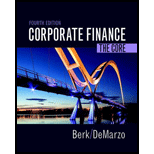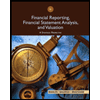
a)
To discuss: The difference between operating cycle and cash cycle.
Introduction:
Cash cycle is also termed as cash conversion cycle that measures the time taken to convert the cash into stocks, accounts payable by the way of sales and accounts receivables and again back to cash.
a)
Explanation of Solution
Operating cycle determines the average length of time taken from the initial cash to produce the item to the cash received from the customers. This includes various factors like payment terms and conditions a company gives its customers and the payment that the company receives from its suppliers.
Cash cycle is also known as cash conversion cycle. This is the time taken by the company to transfer its resources into cash. This involves cyclic effects from purchase of inventory to the amount recovered from the customers. The company’s position indicates positive when it has consistent cash and uses it in various companies’ activities.
b)
To discuss:
Increase in the inventory will affect the cash cycle of the firm, having remaining things, equal.
Introduction:
Cash cycle is also termed as cash conversion cycle that measures the time taken to convert the cash into stocks, accounts payable by the way of sales and accounts receivables and again back to cash.
b)
Explanation of Solution
If the firm’s inventory increases, the inventory days will also increase, having other things to remain the same. This will lead to increase the cash cycle of the firm.
c)
To think critically: The impact on cash cycle if the firm gets discounts from its suppliers.
Introduction:
Cash cycle is also termed as cash conversion cycle that measures the time taken to convert the cash into stocks, accounts payable by the way of sales and accounts receivables and again back to cash.
c)
Explanation of Solution
The impact on cash cycle is that if the firm gets discounts from its suppliers then the accounts payable days will automatically decrease and the rest remains the same. This will lead to the increase in the cash cycle of the firm.
Want to see more full solutions like this?
Chapter 26 Solutions
Corporate Finance: The Core (4th Edition) (Berk, DeMarzo & Harford, The Corporate Finance Series)
- Please help me with this , with tge store name puebleo in St. Thomas US virgin islandsarrow_forwardI would like to expand pueblo in S5. Thomas virgin islands to Spain. Please help with an analysis expansion.arrow_forwardPlease help me with this, guidelines for the super market pueblo in St. Thomas US virgin islandsarrow_forward
- Need the below table filled out for Short-term debt %, Long-term debt $,%, Common equity $,% and Total capital $,%. Market Value Capital Structure Suppose the Schoof Company has this book value balance sheet: Current assets $30,000,000 Current liabilities $20,000,000 Notes payable 10,000,000 Fixed assets 70,000,000 Long-term debt 30,000,000 Common stock (1 million shares) 1,000,000 Retained earnings 39,000,000 Total assets $100,000,000 Total liabilities and equity $100,000,000 The notes payable are to banks, and the interest rate on this debt is 11%, the same as the rate on new bank loans. These bank loans are not used for seasonal financing but instead are part of the company's permanent capital structure. The long-term debt consists of 30,000 bonds, each with a par value of $1,000, an annual coupon interest rate of 6%, and a 15-year maturity. The going rate of interest on new long-term debt, rd, is 12%, and this is the…arrow_forwardNed assistance with Q3 and Q4 below? Cost of Equity The earnings, dividends, and stock price of Shelby Inc. are expected to grow at 6% per year in the future. Shelby's common stock sells for $21 per share, its last dividend was $1.00, and the company will pay a dividend of $1.06 at the end of the current year. Using the discounted cash flow approach, what is its cost of equity? Round your answer to two decimal places. 11.06 % If the firm's beta is 1.3, the risk-free rate is 8%, and the expected return on the market is 11%, then what would be the firm's cost of equity based on the CAPM approach? Round your answer to two decimal places. 11.90% If the firm's bonds earn a return of 9%, then what would be your estimate of rs using the own-bond-yield-plus-judgmental-risk-premium approach? (Hint: Use the mid-point of the risk premium range.) Round your answer to two decimal places. % On the basis of the results of parts a–c, what would be your estimate of Shelby's cost of equity?…arrow_forwardWhat monthly compounded interest rate would Second National Bank need to pay on savings deposits to provide an effective rate of 6.2%?arrow_forward
 EBK CONTEMPORARY FINANCIAL MANAGEMENTFinanceISBN:9781337514835Author:MOYERPublisher:CENGAGE LEARNING - CONSIGNMENT
EBK CONTEMPORARY FINANCIAL MANAGEMENTFinanceISBN:9781337514835Author:MOYERPublisher:CENGAGE LEARNING - CONSIGNMENT Intermediate Financial Management (MindTap Course...FinanceISBN:9781337395083Author:Eugene F. Brigham, Phillip R. DavesPublisher:Cengage Learning
Intermediate Financial Management (MindTap Course...FinanceISBN:9781337395083Author:Eugene F. Brigham, Phillip R. DavesPublisher:Cengage Learning Cornerstones of Cost Management (Cornerstones Ser...AccountingISBN:9781305970663Author:Don R. Hansen, Maryanne M. MowenPublisher:Cengage Learning
Cornerstones of Cost Management (Cornerstones Ser...AccountingISBN:9781305970663Author:Don R. Hansen, Maryanne M. MowenPublisher:Cengage Learning Cornerstones of Financial AccountingAccountingISBN:9781337690881Author:Jay Rich, Jeff JonesPublisher:Cengage Learning
Cornerstones of Financial AccountingAccountingISBN:9781337690881Author:Jay Rich, Jeff JonesPublisher:Cengage Learning Financial Reporting, Financial Statement Analysis...FinanceISBN:9781285190907Author:James M. Wahlen, Stephen P. Baginski, Mark BradshawPublisher:Cengage LearningPrinciples of Accounting Volume 1AccountingISBN:9781947172685Author:OpenStaxPublisher:OpenStax College
Financial Reporting, Financial Statement Analysis...FinanceISBN:9781285190907Author:James M. Wahlen, Stephen P. Baginski, Mark BradshawPublisher:Cengage LearningPrinciples of Accounting Volume 1AccountingISBN:9781947172685Author:OpenStaxPublisher:OpenStax College





